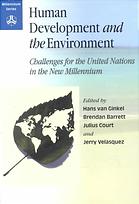

Most ebook files are in PDF format, so you can easily read them using various software such as Foxit Reader or directly on the Google Chrome browser.
Some ebook files are released by publishers in other formats such as .awz, .mobi, .epub, .fb2, etc. You may need to install specific software to read these formats on mobile/PC, such as Calibre.
Please read the tutorial at this link: https://ebookbell.com/faq
We offer FREE conversion to the popular formats you request; however, this may take some time. Therefore, right after payment, please email us, and we will try to provide the service as quickly as possible.
For some exceptional file formats or broken links (if any), please refrain from opening any disputes. Instead, email us first, and we will try to assist within a maximum of 6 hours.
EbookBell Team

4.0
6 reviewsHuman Development and the Environment looks at the problems, processes, and actors that constitute the milieu for human development and the environment in the new millennium. It charts some of the major trends affecting human development: globalization; population; urbanization; poverty; equity; education; health; climate change; biodiversity; desertification; international cooperation and institutions. The authors contend that it is unacceptable for over a billion people to be still living in abject poverty and without the means to an.
Annotation
The new millennium sees humankind living in a vastly more complex, inter-linked and mutually dependent world. There are increasing numbers of participants in world affairs today, as private and public nonstate actors jostle alongside national governments in setting and implementing an ever more crowded agenda. This situation is throwing up new challenges -- in the fields of security, governance, development and environment -- and will require innovative thinking and new forms of global governance. In this period of transition, the UN is the focus of many people's hopes and aspirations. This book looks at the problems, processes, and actors that will have a major role in human development and the environment in the new millennium. It charts some of the significant trends affecting human development: globalization; population; urbanization; poverty; equity; education; health; climate change; biodiversity; desertification; international cooperation and institutions. The book outlines productive waysin which the international community and the UN system can address the major challenges of eradicating poverty and reducing the rate of environmental deterioration. The authors conclude that among the existing global institutions, only the UN has the moral legitimacy, global credibility, and practical reach to mediate and reconcile the competing pulls and tensions associated with both the process and outcomes of globalization.